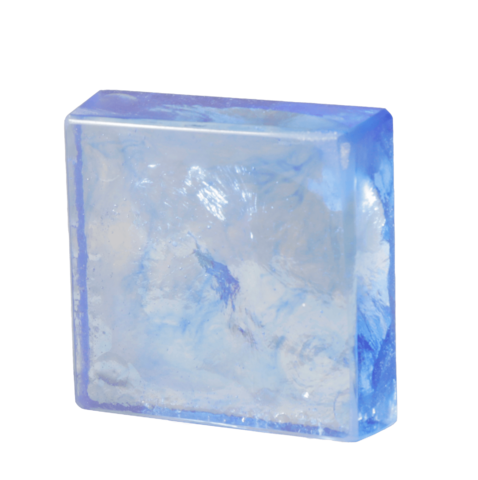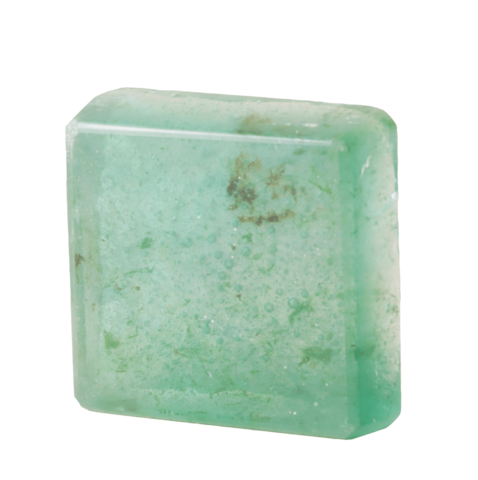three-dimensional elements made of cast glass
Life Cycle Transition
About the Product


Glass can be used to manufacture products that combine transparency and high compressive strength. These can be used as load-bearing elements such as beams, columns or free-standing façades.
Glass becomes malleable when heated to over 600° Celsius. By pouring molten glass into casting moulds, solid three-dimensional glass components can be created, which can be detached from the flat cubature specified by the float industry. These repeating components can be stacked to form freely shaped glass structures, eliminating the need for an additional support structure.
This type of construction is suitable for façades with a supporting function as a means of illumination.
Although glass can theoretically be re-melted endlessly without loss of quality, in practice only a small percentage is reused or recycled, mainly due to contamination from coatings and adhesives. Cast glass units – due to their larger cross-section – can tolerate a higher degree of impurities and can therefore be produced by using waste glass as a raw material without compromising their mechanical or aesthetic properties.
The “Re3 Glass” project of TU Delft involves the development of a new type of reversible system of dry-mounted cast glass components.100% waste glass is melted at 750–900° Celsius and put into a desired form in which it solidifies. Thanks to an interlocking geometry, the system can achieve the desired stiffness and stability with the help of a minimal metal frame. In addition, a dry, colourless intermediate layer serves as a buffer between the glass units. Different materials (e.g. PVB, PU) and production methods were experimentally assessed for this purpose. In addition to avoiding stress concentrations due to glass-to-glass contact, the dry intermediate layer can also absorb the unavoidable dimensional tolerances. Dry construction enables a reversible glass system with reuse of the components. High-quality recycling by remelting the components is also possible.
Manufacturer: TU Delft Faculteit Bouwkunde